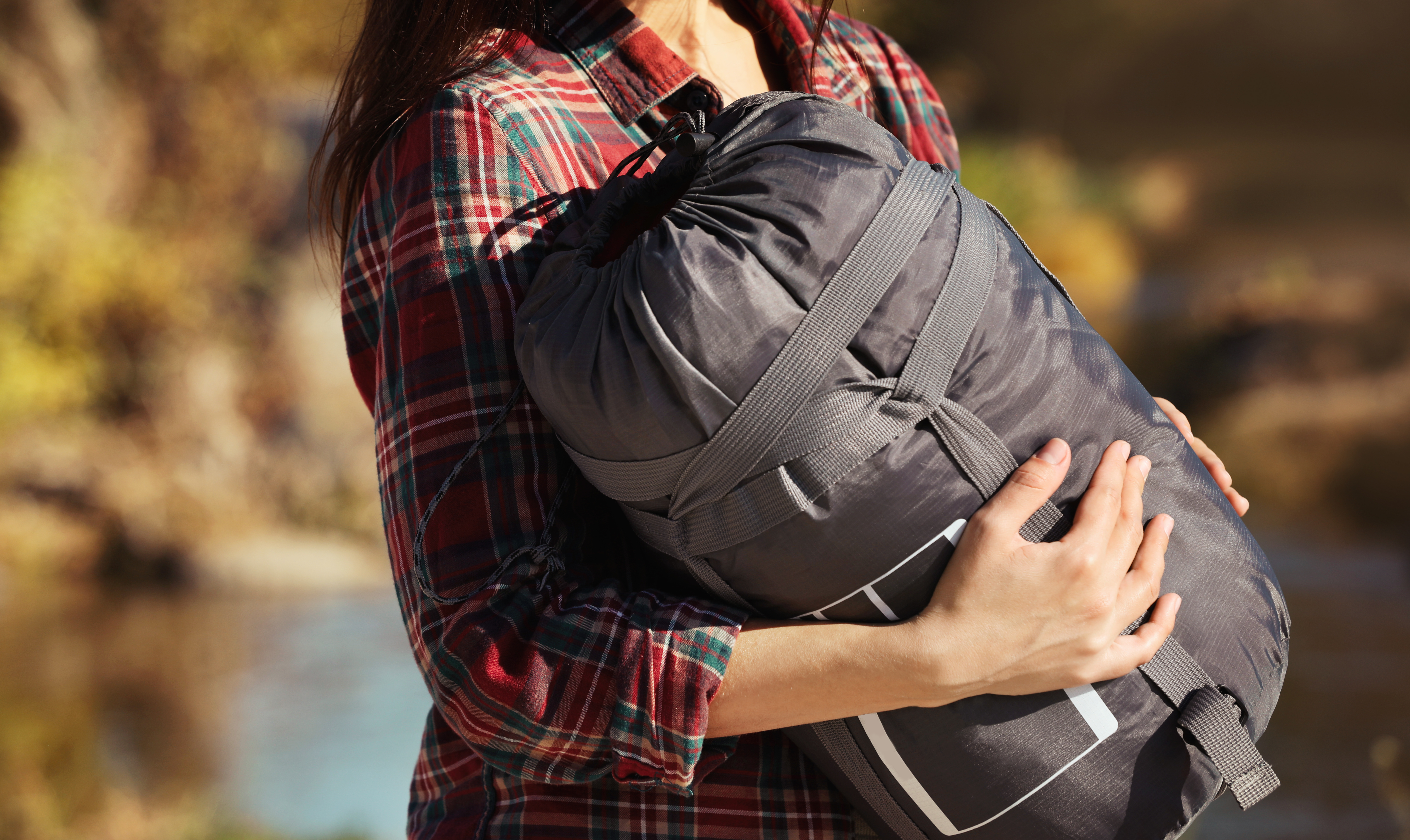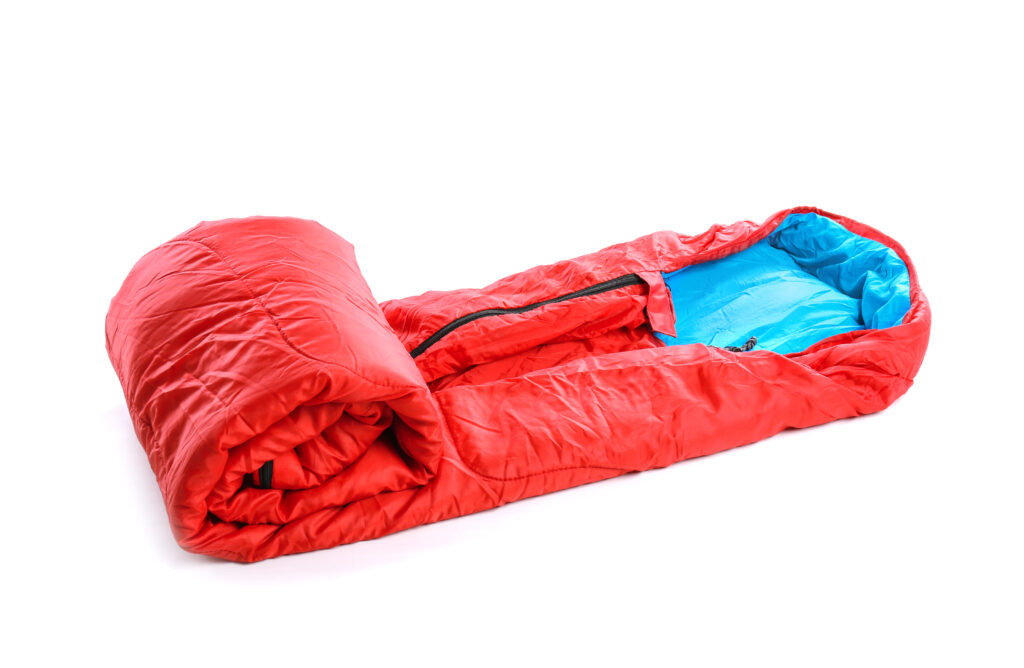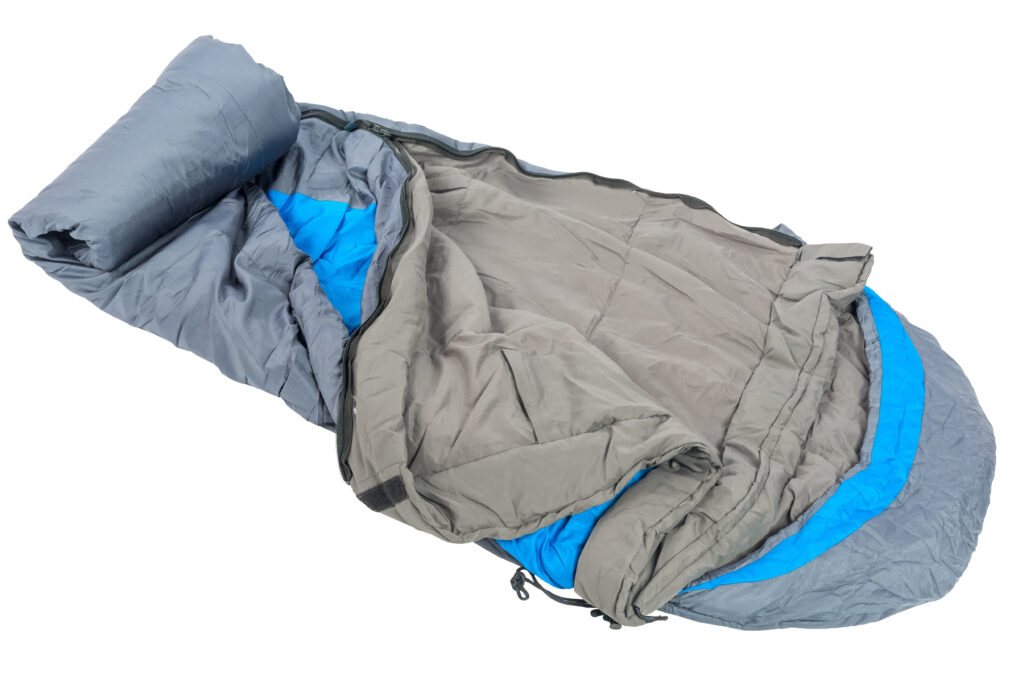
There’s nothing better than curling up in a sleeping bag after a long day of outdoor travel and training. Sometimes it’s easy to take our sleeping bags for granted, but these items still need to be maintained and cared for just like anything else in a campsite. So what’s the best way to clean a military sleeping bag?
Most military sleeping bags are made from synthetic materials, such as polyester. As such, they can be cleaned and dried more quickly than down sleeping bags. Synthetic sleeping bags can be washed in by hand, or in an electric washing machine. Proper drying is critical to its maintenance as well.
There are many different varieties of military sleeping bags, but all of them will need to be cleaned from time to time. For a walkthrough on proper washing and drying techniques, as well as some of the best military sleeping bags on the market, read on below.
Machine Washing Sleeping Bags
At the end of the day, a military sleeping bag is pretty much the same as any other synthetic sleeping bag. There isn’t really a standard-issue model. Instead there are multiple sleeping bag variations and brands that are used by the military.
These models are available at most military surplus websites and stores, and online retailers sell them as well. The care of each specific type of sleeping bag may vary depending on the materials and product recommendations, but there are some basic guidelines that are widely applicable.
First off, almost every sleeping bag is safe to clean in a washing machine. As long as you’re carefully selecting the right cycle and are loading it properly, there’s no reason why a spin through the laundry will hurt it.
Do not dry clean them though! The harsh chemicals and process of dry-cleaning can ruin your sleeping bag.
Military sleeping bags are usually filled with synthetic materials such as polyester, so the guidelines in this article are specific to synthetic sleeping bags. Down sleeping bags can also be cycled through a washing machine, but they may require different types of care.
For more information about washing down sleeping bags, take a look at this article.
So, when you’re machine-washing a synthetic sleeping bag, there are a few steps that you should follow.
1. Decide whether or not your sleeping bag needs to be cleaned right now.
Most sleeping bags do not need to be washed after every use. In fact, washing them too often can end up stripping away the oils and materials that keep it fluffy and warm.
Unless the sleeping bag was exposed to particularly unclean or damp conditions, it only needs to be washed 1-3 times per year.
2. Look at the tags and specific product care
Every sleeping bag should have a tag attached somewhere on the lining or storage bag. This will give specific details about the bag’s composition, as well as the recommended cleaning settings.
Most sleeping bags are durable enough to withstand the washing process detailed below, but check the tag on your model just in case it needs specific care.
3. If possible, use a front-loading washer

Front-loading washers are better than top-loading ones when it comes to washing sleeping bags. Because of the design of top-loaders, it’s easy for bags to get wrapped around the center pillar and they can end up stretched and torn.
Commercial-sized washers are the best because it allows the bag to get fully soaked and spun. Sleeping bags can end up being pretty hefty once they’re loaded in, so a bigger space lets them get tumbled and cleaned better.
If you only have a top-load washer at home, or want to use a larger front-loader, a laundromat might be your best bet.
4. Use a detergent that is suitable for sleeping bags
Standard laundry detergent is great for most types of clothing, but sometimes it doesn’t work well for sleeping bags. This isn’t always a matter of life and death, but using an ill-fitting detergent can make you sleeping bag less fluffy.
Do some research on the detergent you have at home and see if it will work for you sleeping bag. If you need to buy a special soap, I would recommend Nikwax Tech Wash
5. Unzip the sleeping bag and use a delicate wash cycle
Before loading the sleeping bag into the washer, you should completely unzip it. Leave the loose zipper halfway up the bag as well so it’s not jammed down at one end. Unzipping the bag will help prevent it from snagging, twisting, or breaking.
Use a delicate wash cycle with either cold or warm water. Once it has gone through a complete wash, put it through a rinse cycle at least one more time. This will help to fully flush out any lingering soap.
Repeat the rinse process until you no longer see any soap suds. Once you’re done the bag should feel damp, but not soaking.
6. Support the sleeping bag as you remove it
Once the bag is fully clean, carefully lift it out of the washer in both arms. Don’t just pick it up by one end, because the added weight and strain can cause the seams to rip.
Gently roll the sleeping bag and squeeze it to remove excess water. Promptly move on to the drying step of your choice, all of which will be detailed in a separate section below.
Hand Washing Sleeping Bags

If machine-washing isn’t an option for you (or you just prefer to get the job done yourself) you might want to consider hand washing. Sleeping bags can be safely washed by hand, and you might find that you prefer this method because you can make sure that it’s really getting clean.
Again, there are a few simple steps you can follow along with to wash a synthetic sleeping bag by hand.
1. Fill a bathtub 1/2 to 3/4 full of lukewarm water and add cleaner
A bathtub is usually the best place to wash a sleeping bag by hand. It’s a big enough area to work with and you can fully submerge the material.
Use water that is slightly warm or slightly cool, depending on your preference or the bag’s washing directions. Don’t go too hot or too cold either way! Add a small amount of detergent to the water and wait until it has completely dissolved. (Again, make sure the detergent you chose is safe for sleeping bags).
2. Soak the sleeping bag and work soapy water into the material
Zip up the sleeping bag as far as possible and fully submerge it in the bathtub. If the sleeping bag has a waterproof liner, turn it inside out before submerging it.
With your hands or with clean bare feet, work the soap into the material. Focus on the most heavily-soiled places, but make sure to clean the entire bag.
Let it soak for at least 1 hour, then drain the tub. Roll up and squeeze the sleeping bag to remove some of the soapy water.
3. Rinse the sleeping bag repeatedly
The final step will probably take the most effort. Now that the bag is clean, you’ll need to get all the soap out. Refill the bathtub with clean lukewarm water and rinse the sleeping bag. Work it with your hands and feet until the water is soapy again.
Drain the tub again and repeat this rinsing process as many times as necessary. Once the water is no longer becoming soapy, you can drain the tub for the last time and squeeze excess moisture from the sleeping bag again.
Move on to the drying technique of your choice.
Proper Drying Techniques

When it comes to drying a sleeping bag, it doesn’t really matter if it’s down or synthetic. The processes are similar for both!
The first (and easiest) method to use is an electric dryer. Sleeping bags are safe to machine-dry. If possible, use a front-loading, commercial-sized dryer so the bag has room to tumble dry.
Use a low-heat setting because synthetic materials can melt under high heat. Add a couple tennis balls to the load as well! This can help fluff the padding of the sleeping bag and prevent it from clumping.
It’s likely that the sleeping bag won’t be fully dry after just one cycle, so run it through as many times as necessary.
If you prefer to air-dry your sleeping bag, that’s a valid option too. It may take longer, but it will be gentler on the stuffing material.
To get started, simply place the sleeping bag in a warm, dry area and move it around and flip it from time to time to prevent it from sitting in a puddle. You can also hang it up to dry, but make sure you distribute the weight to that it doesn’t place strain on the seams.
Do not place the sleeping bag in direct sunlight to dry it. UV rays can be damaging to the material of synthetic sleeping bags, and can cause them to break down or bleach.
If you live in a particularly humid area, air-drying might not be a practical option for you. Check the sleeping bag thoroughly for wetness before you roll it up and store it.